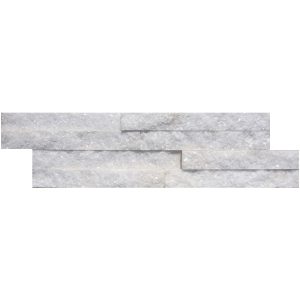Introduction
Cultured stone, also known as manufactured stone or faux stone, is a popular choice for homeowners and builders looking to achieve the look of natural stone at a more affordable price. While cultured stone offers many benefits, such as durability and versatility, it can also be prone to dirt, grime, and other forms of buildup over time. Proper cleaning and maintenance are essential to preserve the beauty and longevity of cultured stone surfaces. In this comprehensive guide, we will explore the best practices, techniques, and tips for cleaning cultured stone effectively.
Understanding Cultured Stone
Before diving into the cleaning process, it is important to understand what cultured stone is and how it differs from natural stone. Cultured stone is a man-made material that replicates the look and texture of natural stone through a mixture of cement, aggregates, and pigments. It is lighter and more uniform in shape and color compared to natural stone, making it easier to install and maintain.
While cultured stone is designed to be durable and low-maintenance, it is still susceptible to dirt, dust, mold, mildew, and other forms of buildup. Regular cleaning is essential to prevent staining, discoloration, and deterioration of the surface.
Cleaning Cultured Stone: Tips and Techniques
1. Gather the Necessary Supplies: Before you start cleaning your cultured stone surfaces, gather the necessary supplies, including a soft-bristled brush, mild detergent or stone cleaner, water, a bucket, and a clean cloth or sponge.
2. Test a Small Area: Before applying any cleaning solution to the entire surface, test it on a small, inconspicuous area to ensure that it does not cause any damage or discoloration. This step is especially important if you are using a new cleaning product or technique.
3. Remove Loose Debris: Start by removing any loose debris, dirt, or dust from the surface of the cultured stone using a soft-bristled brush or a vacuum cleaner with a brush attachment. This will make the cleaning process more effective and prevent scratching the surface.
4. Prepare the Cleaning Solution: Mix a small amount of mild detergent or stone cleaner with water in a bucket according to the manufacturer's instructions. Avoid using harsh chemicals or acidic cleaners, as they can damage the surface of the cultured stone.
5. Apply the Cleaning Solution: Dip a clean cloth or sponge into the cleaning solution and gently scrub the cultured stone surface in a circular motion. Pay special attention to areas with visible stains or buildup. Avoid using excessive force or abrasive materials, as they can scratch or damage the surface.
6. Rinse Thoroughly: Once you have cleaned the entire surface, rinse it thoroughly with clean water to remove any residue from the cleaning solution. Use a clean cloth or sponge to wipe away excess water and prevent streaking or water spots.
7. Dry the Surface: Allow the cultured stone surface to air dry completely before using it or applying any sealant or protective coating. Avoid using heat sources or abrasive materials to speed up the drying process, as they can damage the surface.

8. Apply Sealant (Optional): To protect the cultured stone surface from future staining and damage, consider applying a sealant or protective coating after cleaning. Follow the manufacturer's instructions for the proper application and maintenance of the sealant.
Maintaining Cultured Stone Surfaces
In addition to regular cleaning, maintaining cultured stone surfaces involves taking proactive steps to prevent staining, discoloration, and deterioration. Here are some tips for maintaining the beauty and longevity of your cultured stone surfaces:
1. Avoid Harsh Chemicals: Avoid using harsh chemicals, acidic cleaners, or abrasive materials on cultured stone surfaces, as they can damage the finish and cause discoloration. Stick to mild detergents or stone cleaners recommended for use on cultured stone.
2. Clean Spills Immediately: If spills occur on the cultured stone surface, clean them up immediately using a clean cloth or sponge and water. Prompt action can prevent staining and damage to the surface.
3. Protect the Surface: Consider using coasters, placemats, or trivets to protect the cultured stone surface from hot pots, pans, or beverages that can cause heat damage or staining. Use felt pads or furniture protectors on the bottom of furniture to prevent scratching or scuffing.
4. Inspect Regularly: Inspect the cultured stone surface regularly for signs of damage, discoloration, or deterioration. Address any issues promptly to prevent them from worsening and requiring costly repairs.
5. Avoid Pressure Washing: While pressure washing can be an effective cleaning method for some surfaces, it is not recommended for cultured stone. The high pressure can damage the surface and cause it to deteriorate prematurely.
check is an essential part of maintaining the beauty and longevity of your surfaces. By following the tips, techniques, and best practices outlined in this guide, you can keep your cultured stone surfaces looking their best for years to come. Remember to clean regularly, use mild detergents or stone cleaners, and take proactive steps to prevent staining and damage. With proper care and maintenance, your cultured stone surfaces will continue to enhance the aesthetic appeal of your home or building.
